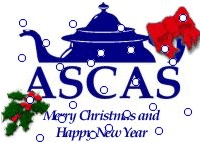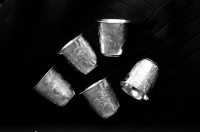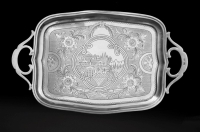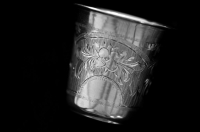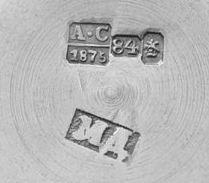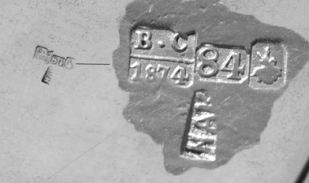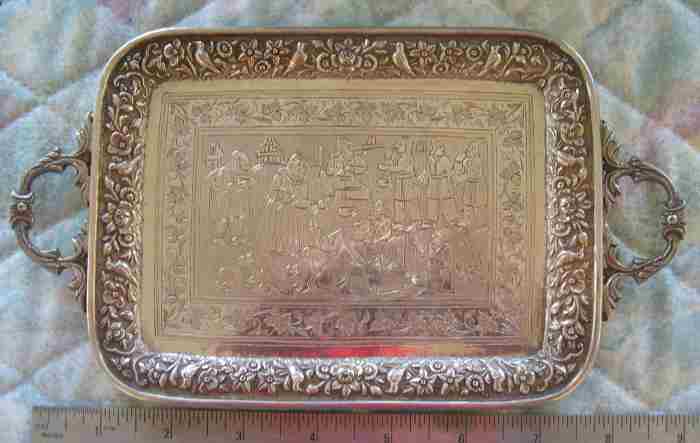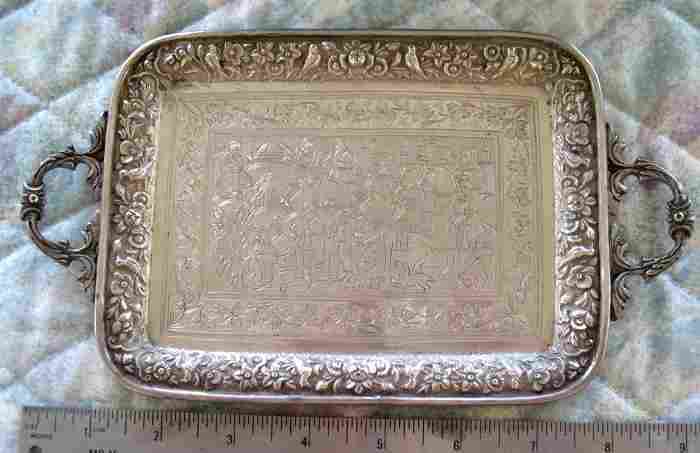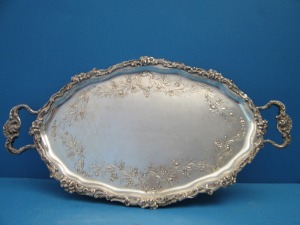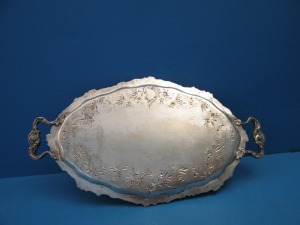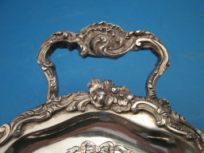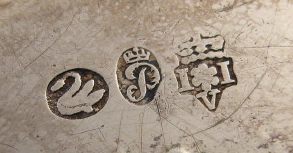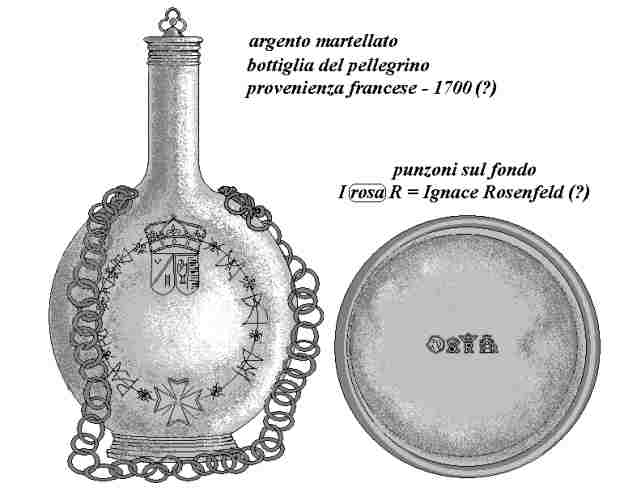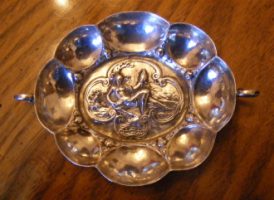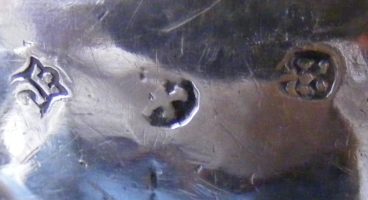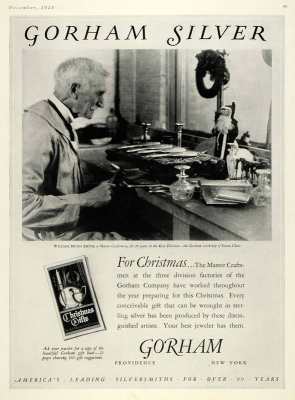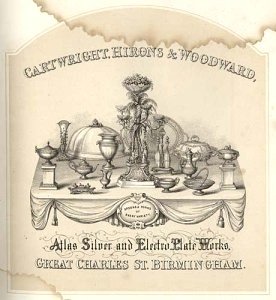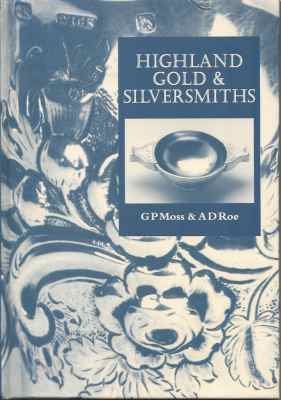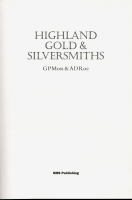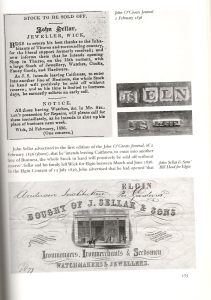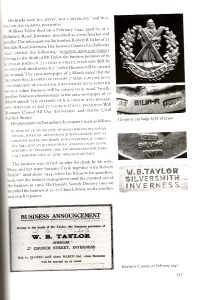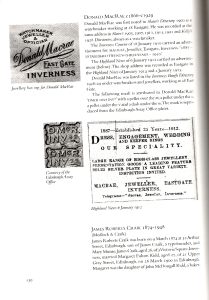 newsletter
# 91 December 2011
newsletter
# 91 December 2011www.ASCASonline.org SITE MAP
email: silverassociation@yahoo.it
YOUR GUIDE TO DECEMBER NEWSLETTER: articles new
members members'
window
|
2012 ASCAS membership
No fees are requested nor accepted for ASCAS membership.
Members still interested to ASCAS and its activity are invited
to send an e-mail to
confirming their 2012 membership (the simplest way is to
use the 'reply' button on our December e-mail).
I apologize for this little effort asked to whomever appreciates
and supports ASCAS activity.
No action is required to unsubscribe. Members not confirming
their membership will be automatically deleted from the sending
of our monthly Newsletter and will be suspended on
February 2012.
Please accept my best wishes for a happy Christmas and a
prosperous New Year and my thanks for your present or past
appreciation of my work.
Giorgio Busetto
ASCAS Secretary
A new article for ASCAS website
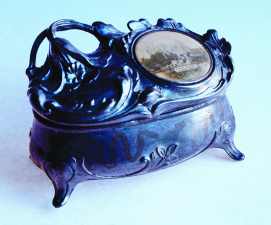
Joanne Wiertella presents:
|
New members
Welcome to new ASCAS members:
Tony Absolom - South Africa
Ian Kozlowski - South Africa
Mary McHugh - Ireland
Andrei Neagu - Romania
|
top page -
page map |
Members' Window # 91
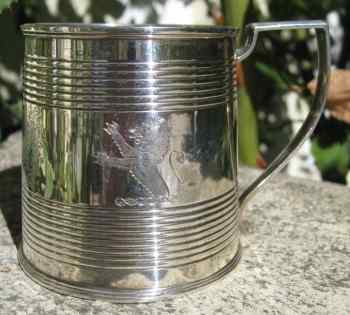
Alan Yates and Giorgio Busetto present:
|
Mail to ASCAS: e-mail silverassociation@yahoo.it
Franck Bonnard writes:
...I have a set of Russian Silver, five vodka beakers and tray.
They are dated 1874 and 1875.
This set belonged to my great great grandfather.
I would like to identify the maker's mark. I did some research
on sites of antiquity, but in vain.
Could you help me?
Franck Bonnard
The marks on the beaker belong to A. Svyechin, Moscow
1862-1875 (assayer mark AC) and M. Dmitriyev, Moscow 1854-1877
(silversmith's mark MD)
The marks on the tray belong to Victor Savinkov Moscow 1855-1888 (assayer VS in Cyrillic = BC in Latin)
(according to Postnikova) or to Viktor Savinskij (1859-1894)
or Veniamin Savinskij (1862-1875)(according to Assay charters and records), and, possibly,
to Nicholai A. Kraslyeninikov, Moscow 1874-1890 (silversmith)
Giorgio Busetto
Wayne Bednersh writes:
... I have these two silver trays that I have been unable to
identify or even understand. I was hoping that you could ask
your readers to help me figure out what I have.
The tray measures about 9" wide. There are no marks of any kind
to indicate either location or metal content.
The trays have been tested and are of high quality silver. I
suspect that these are Victorian era 'calling card' trays, but
am open to other suggestions.
The trays have been hand hammered. The outer rim is fine quality
repousse work and depicts birds and flowers.
The handles appear to be cast and soldered to the tray. The
inside border is engraved but there is no bright cut engraving.
All of the interior workmanship which depicts everyday workers,
dogs and background buildings are engraved.
In the lower center is a reclining man who is being propped up
by another man. An axe has dropped from his hand. A woman is
standing over the man in period dress. Five other men appear to
be standing around or talking. Some of the men are bearded and
some are clean shaven. The three dogs are just sniffing around.
There are four small buildings in the background. I suspect that
the style of dress is the only clue as to origination.
The second tray is almost the same measurements as the other
tray and the handles and outer rim are basically the same
(except for minor hand differences).
The central figure is a horse and rider. There is also a second
horse and rider.
There are six other male figures talking or working. One is
working on a sheaf of wheat. There are three dogs, one goat and
one rabbit (hare?) and four small buildings in the background.
Again there are no marks. I would appreciate any information or
guesses you might have as to the purpose and where these pieces
might have originated.
Wayne Bednersh
Any suggestion will be appreciated.
Giorgio Busetto
Enzo Vanarelli writes:
.... I have a tray I bought some years ago. It was presented me
by a German eBayer with the doubtful clue "maybe marks of French
silver of the end of XVIII Century", it looks me actually a nice
piece, but I don't think it's a French silver of that age.
I was not able to identify the marks on any book I have on
French silver. The shape unusually stretched out, the
workmanship and the heaviness, maybe the alloy too (800/1000 or
13 lot) speaks me rather a German language.
At last I resolved to buy it on the opinion it should be a
German piece of the end of the 19th century (1890/ 1895),
crafted in Hanau not much time after the "half-moon & crown"
introduced, presumably by Georg Roth , bearing some of his
"French fantasy marks".
The tray measures cm 43 in length x cm 24 in width, and weighs
808 gr.
Was I wrong?
Enzo Vanarelli
I believe you are right. I presume that the tray is
German and not French. The mark with the "swan" look like the
French import mark in use at the end of the 19th century.
Giorgio Busetto
***ANSWER PUBLISHED IN JANUARY 2012 NEWSLETTER***
Maria Bigliani writes:
.... I send a drawing I did of a silver bottle inherited from my
father.
It has a cylindrical neck, an incision with a cross of Malta and
a series of symbols that seems to recall a set of initials.
There are two coats of arms, with scale and eagle, surmounted by
a crown.
Under the bottle there are four marks: a head, crowned "a",
crowned "R", "I an R" at the sides of the cup with a crown.
I greatly appreciate any information you can supply about this
object, its provenance and age. Best regards
Maria Bigliani
***ANSWER PUBLISHED IN JANUARY 2012 NEWSLETTER***
Gerald Gerhart writes:
.... I rescued this beautiful nut dish from the "scrap" pile of
a local jeweller and would appreciate any help possible in
determining its origin and the meaning of the hallmarks.
Thanks, in advance
Gerald Gerhart
Your dish is typical example of Hanau silver (see more at
http://www.ascasonline.org/articolo13.html ). The maker is
(possibly) George Roth, Hanau, but another source attributes the
mark to Wolf & Knell, founded in 1887.
Giorgio Busetto
"A PAGE per MONTH"
In this column we present a page obtained from makers'
brochures, books, auction catalogs, advertising or whatever
other printed paper, related to silver, that may be of interest
for ASCAS members.
The images will be published at a "low resolution" level and for
private and personal use only
"A WORD per MONTH"
In this column we
present an abstract from a page of the "What is? Silver
Dictionary"
courtesy of


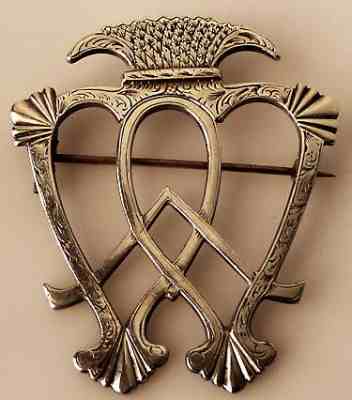
|
LUCKENBOOTHA Luckenbooth brooch is a Scottish heart-shaped
brooch.
|
"A SILVERSMITH per MONTH"
In this column
we present marks, information and history of silversmiths and
silver manufacturers.
This column is published under the kind permission of Giorgio
Busetto's website


HORACE WOODWARD & CO LTDThe firm was established in
Birmingham c. 1850 by George Cartwright and Joseph
Hirons, trading as Cartwright & Hirons.
|
"A BOOK ON MY SHELF"
In this column we present books, new
or ancient, dealing with silver in all its aspects (history,
marks, oddities...). This isn't a "book review" but only a fair
presentation of some useful "tools" that anyone may have in the
shelf of his bookcase.
ASCAS members are invited to contribute to this column
(click to enlarge images)
In the "book on my shelf" of this month ASCAS presents:

Custom Search
Closing our December 2011 edition of ASCAS Newsletter I hope you have appreciated its content.
Your comments, suggestions and advice will be of great help.
My thanks to Wayne Bednersh, Maria Bigliani, Franck Bonnard, Gerald Gerhart, Enzo Vanarelli, Joanne Wiertella, Alan Yates for their invaluable contributions.
Giorgio Busetto
Secretary
ASCAS is a community of people having a common
interest in antique silver.
|
